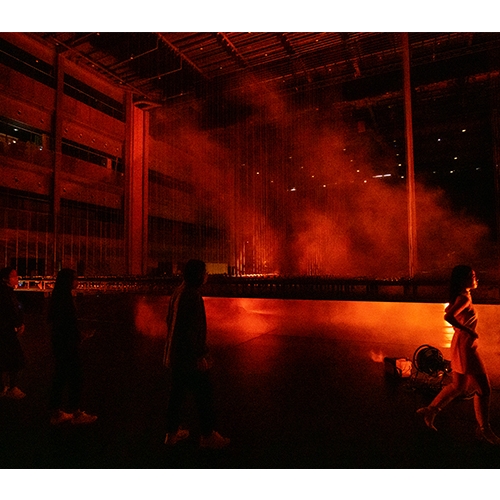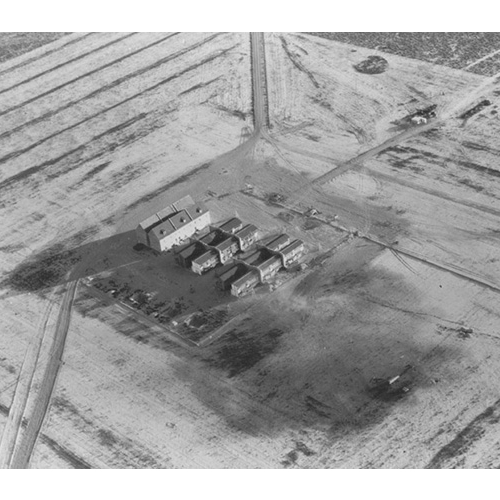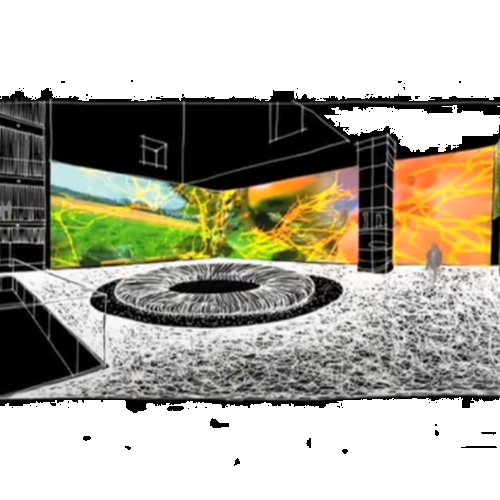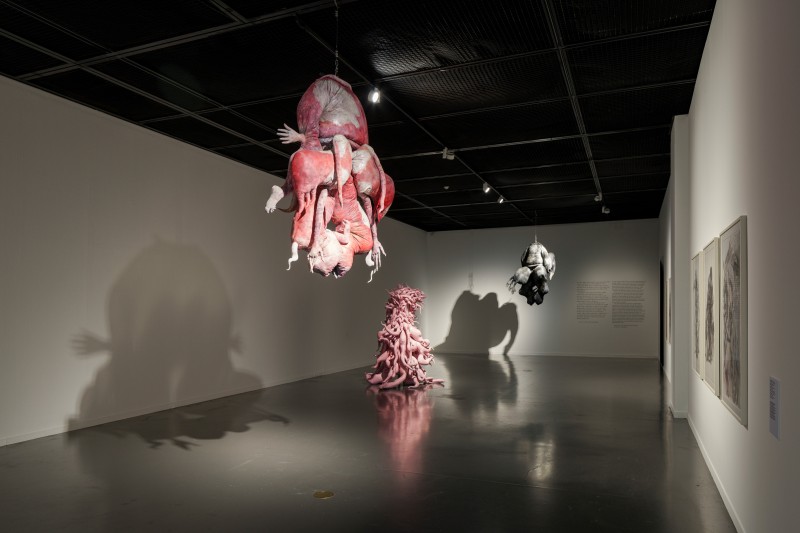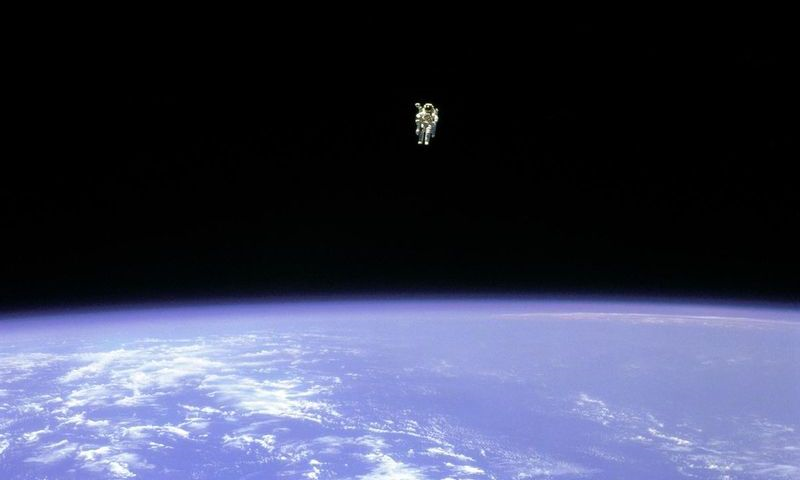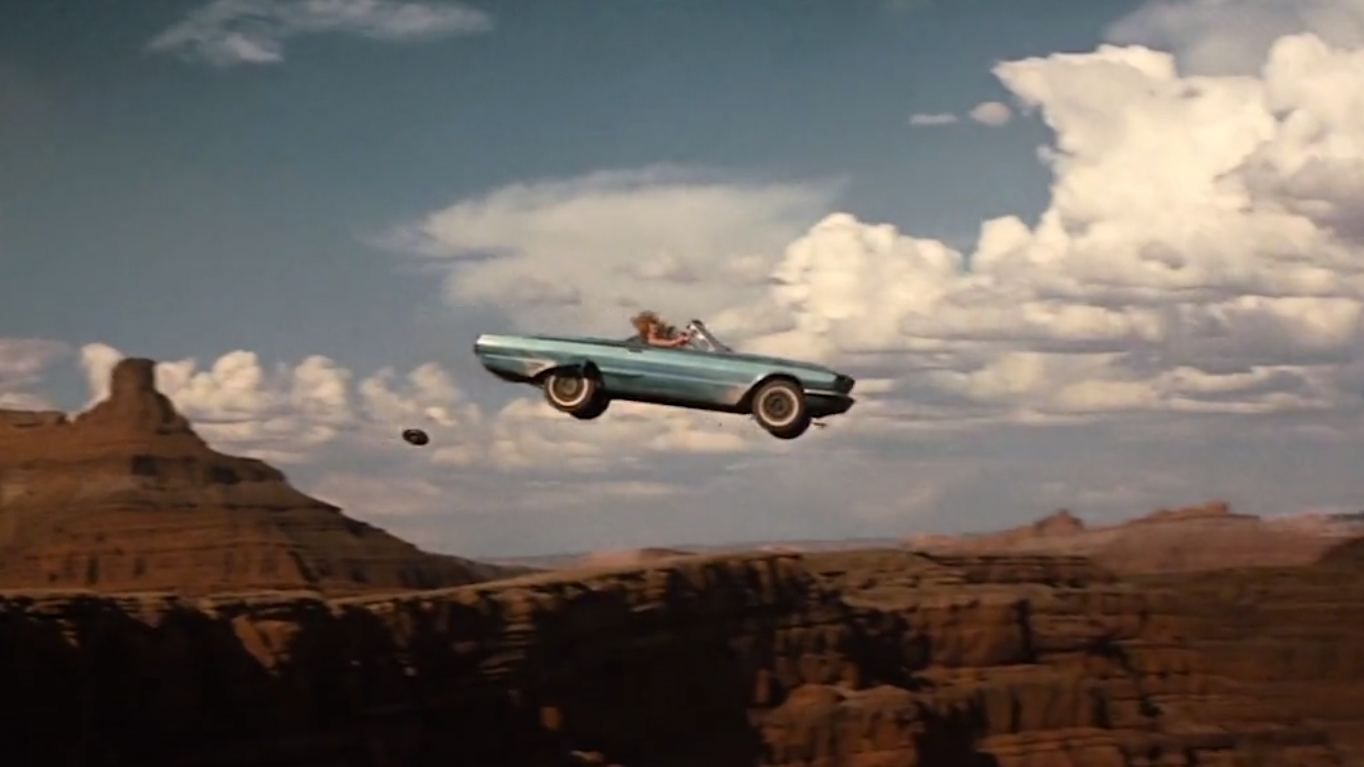1984, Going on a spacewalk without a connection. Bruce McCandless. NASA
1.
Classical physics assumes space to be a box. This is a spatial entity with clear boundaries, in which one finds the universe, the galaxy in the universe, the solar system in the galaxy, the planet in the solar system, the planet in the planet... Philosophy and art have long questioned this sequence. What emerges from space? Likewise, what was there before the birth of time? In other words, if a place without space is ‘nothing’, then where does ‘nothing’ exist? In order for nothing to exist, there must be space for it to exist. If there is nothing, however, nothing is not nothing; therefore, nothing does not exist. This sounds like an abstract pun, but in fact, science has been exploring this matter for a long time. In conclusion – even though it will probably never come to a perfect conclusion – science has a tentative answer. The theory of general relativity defines time and space as relative. The most recent theories in physcis, such as the loop quantum gravity theory, see space as non-substantial. ‘Space has no meaning except for the things that exist’; pace is a relationship of particles; there is no space with nothing; there is no boundary for a priori existence. The physicist Lee Smolin likens space to a sentence. Sentences are made up of combinations of words. Let us make a sentence without words.
( ) ← The sentence in here?
A sentence without words cannot exist. The white space is always part of the context (in the above case, in the symbol). Space is a phenomenon created by the relationship between words and objects.
I needed a more direct and precise definition, so I asked a friend whose father is a physicist about the meaning of space . My friend was just writing a seminar presentation on whether the body can be defined as space. Below is the full text of KakaoTalk from a friend and his physicist father:
Friend: This is such a stupid and absurd question...
But, how is space defined in physics?
Father: Hmmm... It's never going to be easy to understand... but space means ‘the scope of interactions’. In other words, it is the range of ‘feelings’.
Friend: Oh, so it can be said that the body is also space?
Father: You feel it, don’t you? The space that the body takes up?
Friend: It is said that the body takes up space, but I have rarely heard that the body itself is space.
Father: There is nothing in this world that is a space by itself.
Friend: Creepy.
Father: Everyone just has that 'scope'. The reality is all a dot.
2.
Lina Bo Bardi first visited an abandoned factory in Pompéia, northern Brazil, in 1976. At the request of SESC, a cultural centre was planned to be built here. The nineteenth-century British factory of François Hennebique's reinforced concrete system was elegant but old; the roofs were dripping with rainwater, the doors were tattered, the walls and floors were cracked and muddy. At first, all of the old factories were recommended for demolition. However, after the second visit, Lina Bo Bardi changed her mind. Unlike with the first, she visited on the weekend and found that the villagers were using it freely.
Happy people. Children, mothers, grandmothers, and pensioners are going from one warehouse to another. The children ran and adolescents played soccer in the rain falling between the broken roof slats. Mothers grilled barbecues and made sandwiches at the entrance to Clesia Street.▼1
Contrary to the original plan, she opened up the space while preserving the factory in Pompéia. New signs were made, furniture was introduced, and walls were demolished, and all of this was in pursuit of one goal: let people use this place voluntarily. It was a simple but adventurous aim, and it may have been an attempt that turned out to be an impossible dream or a clumsy ideal. Will it work as she hoped it would? Did she know how people would behave? Her method was, above all, based on a trust in people. The Italian communist Lina Beau Bardi wrote: ‘Nothing has changed. The SESC Pompéia Leisure Centre was designed out of the desire to build a different reality. We just put a few small things. A little water. One stove’.▼2
On the other hand, The MIT Media Lab, built by I. M. Pei, was a space in which everything was fixed, says British architecture critic Rowan Moore. The Media Lab, which was built in 1986 to wide acclaim, actively reflected the atrium. The atrium is a space created for people to talk to each other and interact. In an open space with multiple entrances and stairs, MIT researchers can meet and communicate. But that was the architect's idea, and ‘Nothing kills a conversation as much as saying “start a conversation”’.▼3 Stewart Brand, who co-founded the Whole Earth Catalog, criticised the Media Lab as a bluff, incapable of attracting people and lacking in flexibility. As it was the work of a great architect, people could not put nails into the building at will, and they had to adjust in accordance with the architect’s wishes. In the end, the atrium became an empty space that only fulfilled an aesthetic ideal.
A more detailed observation or analysis is needed about these two cases and how they developed afterwards. Still, there is an aspect that makes us realise the definition of space anew. It is the fact that space does not exist initially but is born out of relationships.
The same goes for novels. Textbooks cite characters, events, and backgrounds as the three essential elements of the composition of a novel. When writing a novel, students and apprentices (even writers!) begin by thinking about the setting and background. It means that we think of it as stuffing a story into a set box, but in fact, it is not this; as with all our conversations and stories, we do not know where the story will come from and how it will be connected to any given moment in time or experience. The space of the story is the space that the story creates.
Of course, a minimal boundary is still necessary. People grumble, ‘That's a good thing to say, but what if it becomes disorderly chaos itself?’ ‘What if the novel isn't complete, or it becomes clumsy and distracting?’ Every time I reply, don't worry; even if there are no backgrounds, characters, or events, there are always inevitable limitations. That is the existence of the person who writes the story, the author. The author's limitations determine the limits of the novel. And it becomes the space of the story (at the same time, the people who read the story inhabit and reconstruct the space in their own way). As Lina Bo Bardi believed, the people who live in the space create the space. Therefore, ‘space is the scope of interaction’.
1 Rowan Moore, Why We Build, trans. Lee Jaeyoung, Seoul: Gyedan, 2014, p. 432.
2 Lina Bo Bardi, The stones against diamonds, Architectural Association London, 2013, p. 98.
3 Rowan Moore, Op. cit, p. 436.





